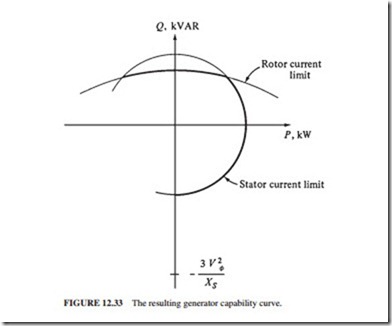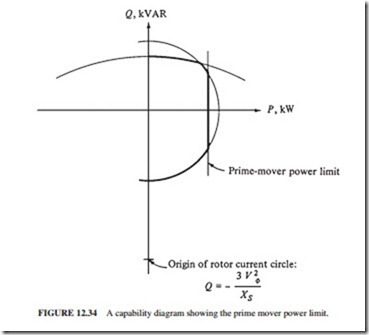SHORT-TIME OPERATION AND SERVICE FACTOR
The heating of the armature and field windings of a synchronous generator is the most important limit in steady-state operation. The power level at which the heating limit usually occurs is much lower than the maximum power that the generator is mechanically and
magnetically able to supply. In general, a typical synchronous generator can supply up to 300 percent of its rated power until its windings burn up.
This ability to supply more power than the rated amount is used for momentary power surges which occur during motor starting and other load transients. A synchronous gener- ator can supply more power than the rated value for longer periods of time as long as the windings do not heat up excessively before the load is removed. For example, a generator rated for 1 MW is able to supply 1.5 MW for 1 min without causing serious damage to the windings. This generator can operate for longer periods at lower power levels.
The insulation class of the windings determines the maximum temperature rise in the generator. The standard insulation classes are A, B, F, and H. In general, these classes correspond to temperature rises above ambient of 60, 80, 105, and 125°C, respectively. The power sup- plied by a generator increases with the insulation class without overheating the windings.
In motors and generators, overheating the windings is a serious problem. In general, when the temperature of the windings increases by 10°C above the rated value, the average lifetime of the machine is reduced by one-half. Since the increase in the temperature of the windings above the rated value drastically reduces the lifetime of the machine, a synchronous generator should not be overloaded unless it is absolutely necessary.
The service factor is the ratio of the actual maximum power of the machine to its name- plate rating. A 1.15 service factor of a generator indicates that it can operate indefinitely at 115 percent of the rated load without harm. The service factor of a motor or a generator pro- vides a margin for error in case the rated loads were improperly estimated.

